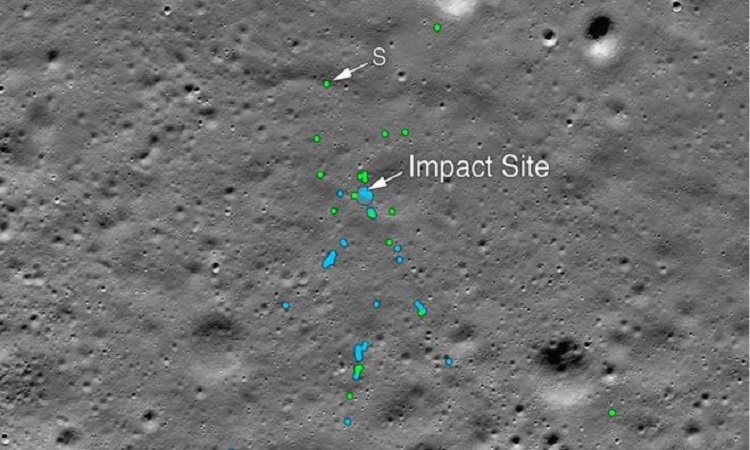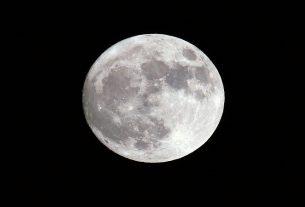A NASA satellite orbiting the moon eventually found the impact site of the Indian probe Vikram, which crashed on September 7 while attempting to alun.
The Goddard Center of the US Space Agency published Monday photographs taken in October and November, where NASA scientists have managed, after analysis, to distinguish small traces of impact and debris thrown around the site under the shock violence.
With the naked eye, it is difficult to see the evidence of impact on these images, but NASA found hidden in the pixels about twenty debris and several places showing disturbances in the lunar soil, which is covered by equivalent of a sand called regolith.
A first passage in September of the American satellite, the Lunar Reconnaissance Orbiter, had produced a series of images of this same site, but the light was bad and NASA at the time said to have found no trace of the crash.
But a 33-year-old Indian computer engineer, Shanmuga Subramanian, then downloaded the first images and found traces of debris, which he had informed Nasa.
The US Space Agency then took pictures, October 14 and 15, and November 11, this time with better illumination of the Sun. The three largest Vikram debris make two pixels out of two on the new images.
Shanmuga Subramanian told AFP that NASA’s inability to find the probe had piqued her interest – the US institution had indeed made a public appeal by posting the photos.
“I compared these two images on two of my laptops On one side there was the old image, and on the other the new image published by NASA”, he says, saying he was helped by other Twitter and Reddit users.
“It was quite difficult, but (I) put efforts,” said this space enthusiast.
India launched the Chandrayaan-2 mission on 22 July. The main orbiter, which operates and is in orbit around the moon, dropped the Vikram lander a few days before the planned moon landing, but at the end of the descent, when it had descended to an altitude of 2 km, the contact was lost. One kilometer from the moon landing point, Vikram was traveling at a horizontal speed of 48 meters per second, and a vertical speed of 60 meters per second.
The Indian space agency (Isro) had simply announced that it had lost contact with its stringer.
The coordinates of the crash site are 70.8810 ° S, 22.7840 ° E, at an altitude of 834 meters, according to NASA.
India would have been the fourth country, after Russia, the United States and China, to alune a probe. Israel also failed in April.




